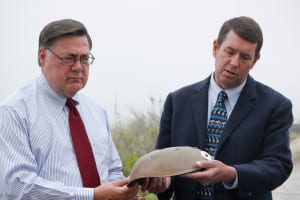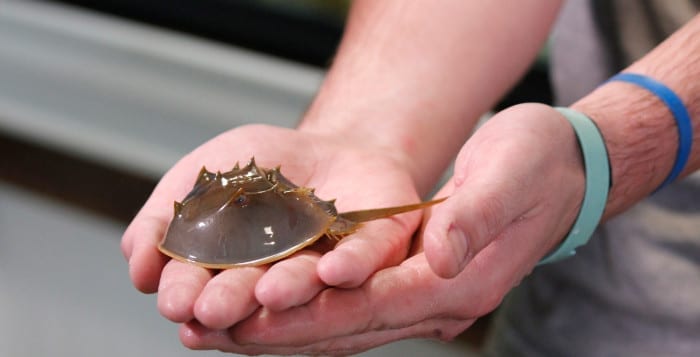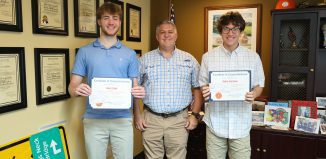Town seeks to limit horseshoe crab harvesting
With its horseshoe crab population dwindling, Town of Brookhaven officials are calling on the New York State Department of Environmental Conservation to ban harvesting within 500 feet of town property.
At the Mount Sinai Stewardship Center at Cedar Beach on Tuesday, Supervisor Ed Romaine (R) announced the Brookhaven Town Board is poised to approve a message in support of the ban at Thursday night’s board meeting.

Horseshoe crabs are harvested for bait and medicinal purposes, as their blue blood, which is worth an estimated $15,000 a quart, is used in the biomedical and pharmaceutical industries to detect bacterial contamination in drugs and medical supplies, due to its special properties.
While there is already a harvesting ban in place for Mount Sinai Harbor, Romaine is seeking to expand the restriction across the north and south shores so the crabs have a safe place to mate.
The crabs take about nine years to reach sexual maturity.
“We think it is time not to stop or prohibit the harvesting of horseshoe crabs … but instead to say, ‘Not within town properties,’” Romaine stated.
Brookhaven’s Chief Environmental Analyst Anthony Graves and clean water advocacy group Defend H20’s Founder and President Kevin McAllister joined Romaine at the Tuesday morning press conference.
Graves said the ban would help preserve the 450-million-year-old species’ population.
Preserving the species affects more than just the crabs: If the population continues to shrink, other species — like the red knot bird, which eat the crab eggs — will suffer.
“They are in some ways an ecological keystone species,” Graves said. “That means that they serve a function beyond their individual existence.”
East Coast waterways are the epicenter for the crabs and, according to McAllister, states like New Jersey, Delaware and Virginia have already enacted harvesting limits. The crabs’ nesting season starts in mid-May and lasts until the end of June. Officials said the crabs are oftentimes harvested at night and illegally.
Romaine said he has asked all of the town’s waterfront villages to support the measure. If the DEC moves forward with the ban, Romaine said the town could help the department with enforcement by establishing an intermunicipal agreement.
A DEC representative did not immediately return a request for comment.







